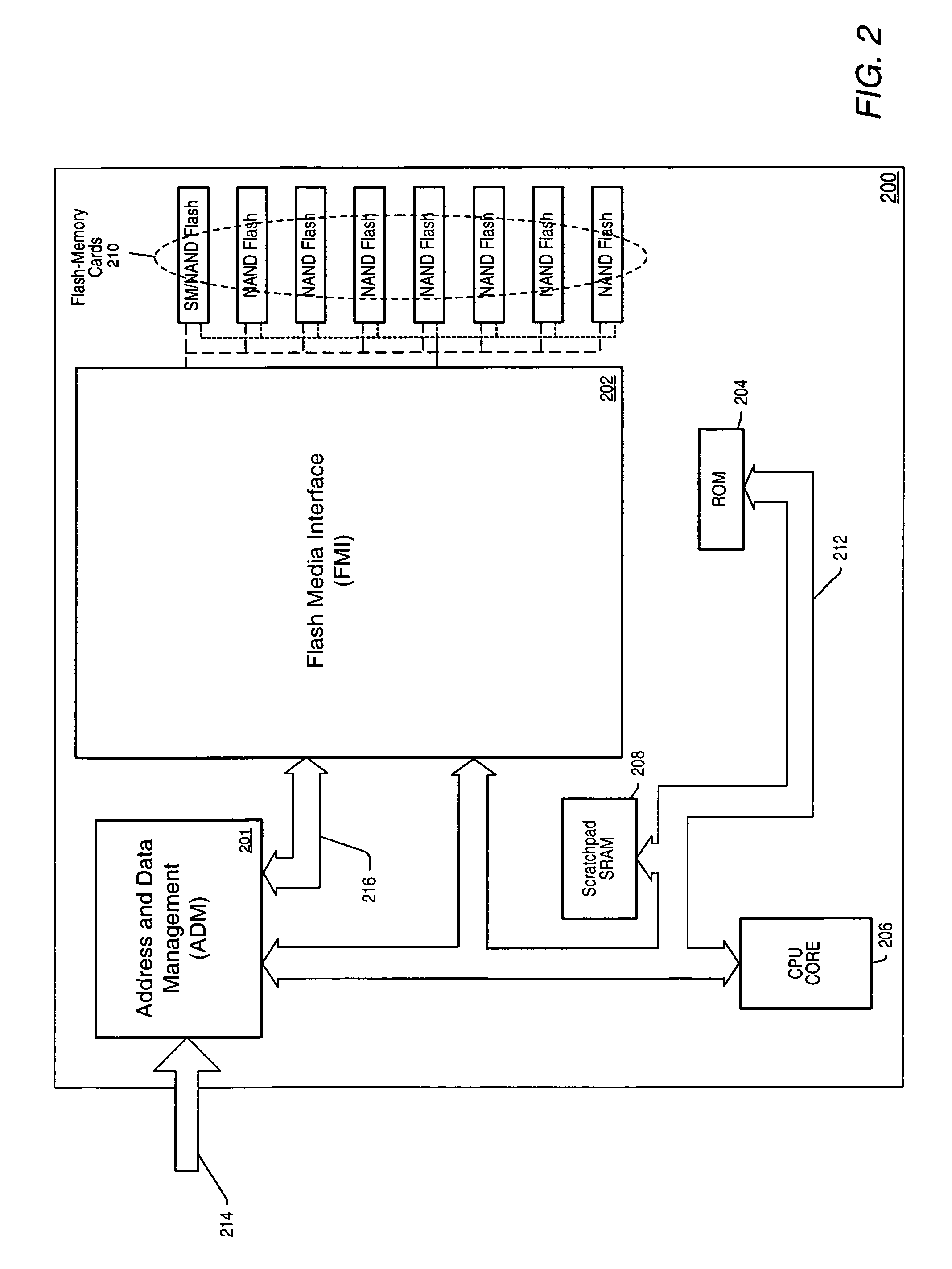Method for fast access to flash-memory media
a flash-memory media and fast technology, applied in the direction of memory adressing/allocation/relocation, instruments, error detection/correction, etc., can solve the problem of limited size and extent of the structure used to describe deferred copy operations, and achieve the effect of reducing the number of data copy operations and fast write access to flash-memory media
- Summary
- Abstract
- Description
- Claims
- Application Information
AI Technical Summary
Benefits of technology
Problems solved by technology
Method used
Image
Examples
Embodiment Construction
[0029]As referenced herein, the terms “flash-memory” and “flash-media” are used interchangeably to mean a special type of electrically erasable programmable read-only memory (EEPROM) that can be erased and reprogrammed in minimum erasable-units, referred to herein as ‘blocks’, instead of one byte at a time. In addition, each block may be organized into subunits called ‘sectors’, where a sector may represent a minimum data size for data stored on a given flash-memory device. While preferred embodiments are described in detail for flash-memory devices organized into blocks and sectors, alternate embodiments featuring other types of non-volatile memory devices organized into minimum erasable-units and subunits are possible and are contemplated. Therefore, it should be understood that “block”, specifically, is used interchangeably with what is referred to generally as “erasable unit” or “EU” for short. As also used herein, “writing a sector” or “writing a subunit” means writing data to ...
PUM
 Login to View More
Login to View More Abstract
Description
Claims
Application Information
 Login to View More
Login to View More - R&D
- Intellectual Property
- Life Sciences
- Materials
- Tech Scout
- Unparalleled Data Quality
- Higher Quality Content
- 60% Fewer Hallucinations
Browse by: Latest US Patents, China's latest patents, Technical Efficacy Thesaurus, Application Domain, Technology Topic, Popular Technical Reports.
© 2025 PatSnap. All rights reserved.Legal|Privacy policy|Modern Slavery Act Transparency Statement|Sitemap|About US| Contact US: help@patsnap.com



